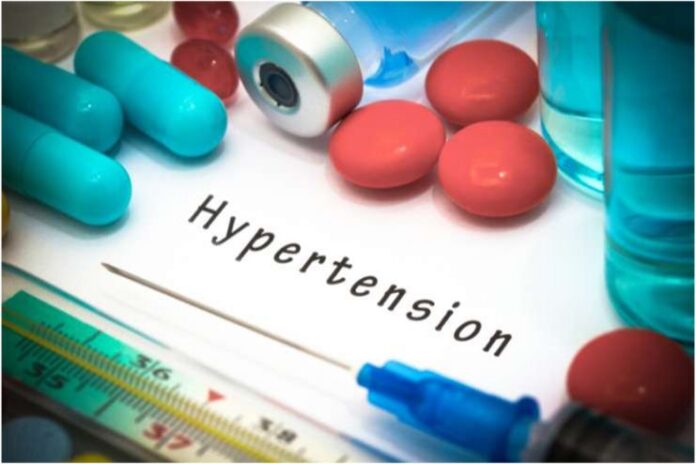AI Contribution
At HealthSpectra, we may use AI to refine grammar and structure, but every piece is shaped, checked, and approved by real people, our expert writers and editors, to ensure clarity, credibility, and care. Learn more..Affiliate Disclaimer
Some links in this article are affiliate links. We may earn a small commission if you make a purchase through these links, at no extra cost to you. We only recommend products we find useful to our readersThe rising incidence of hypertension in children has become a significant public health issue in recent times, defying the widespread belief that this disease predominantly affects adults. Younger people’s incidence of hypertension has alarmingly increased as a result of dietary changes and the rise in sedentary lifestyles. In addition to causing immediate health problems, this increases the chance of developing cardiovascular problems as an adult.
This article discusses the urgent problem of childhood hypertension and highlights the long-term health effects that it may have. This article’s main objective is to offer helpful advice on nutrition and lifestyle, aiming to raise awareness and encourage preventive measures. It seeks to enable parents, caregivers, and educators to protect the cardiovascular health of the next generation by providing insightful information about behaviors that can lower blood pressure.
Understanding Childhood Hypertension
Once thought to be an uncommon occurrence, childhood hypertension is now an increasing health concern. It describes high blood pressure in kids and teens as frequently caused by lifestyle, environmental, and hereditary variables. While lifestyle factors like bad eating habits and a sedentary routine play a significant impact, genetics may also play a part in the genesis of hypertension in children.
When a person’s blood pressure consistently measures higher than usual over an extended period, it is referred to as hypertension or sustained elevation of blood pressure. Age and height-related increases in blood pressure are typical during childhood.
When a kid or adolescent’s average blood pressure is tested more than three times throughout three visits and is at or above the 95th percentile for their age, sex, and height, it is considered hypertension.
When there is a constant excessive strain of blood on the arterial walls, childhood hypertension appears. If untreated, this illness increases the risk of heart disease, stroke, and other cardiovascular difficulties, among other long-term health problems. Determining the risk factors is essential to comprehend the underlying causes of this illness. Important contributing factors include obesity, lack of physical activity, high salt intake, and a family history of hypertension.
Early prevention is essential to lessening the long-term health effects of childhood hypertension. It is crucial to teach good lifestyle patterns to children from a young age. The key to avoiding and treating childhood hypertension is to minimize the consumption of processed and high-sodium foods, encourage regular physical activity, and support a balanced diet full of fruits and vegetables.
Role of Lifestyle Choices

The impact of lifestyle decisions becomes evident in the fight against pediatric hypertension, a potent factor influencing cardiovascular health. In addition to being a preventative tool, teaching and fostering healthy habits in kids lays the groundwork for lifelong well-being. A wide range of lifestyle factors, which include physical activity, sleep patterns, and stress management, significantly impact blood pressure.
Children with mild hypertension or risk factors like obesity or a family history of hypertension can significantly benefit from increasing their physical activity levels. Frequent exercise strengthens the heart, improving its ability to pump blood and lowering arterial pressure. In addition to reducing blood pressure and the risk of developing additional hypertension-related disorders, exercise can aid in weight loss.
Studies show that incorporating 30 to 60 minutes of moderate aerobic activity into the child’s daily routine and limiting sedentary activities like watching television or playing video games to less than two hours per day can lower their blood pressure and reduce the need for antihypertensive drugs.
Getting enough sleep is another essential component of a healthy lifestyle that directly affects blood pressure regulation. Studies show that children who get little or poor-quality sleep have a higher chance of developing hypertension. In addition to promoting children’s ideal physical and mental well-being, regular sleep schedules and ensuring they get the appropriate amount of sleep for their age also indirectly improve blood pressure regulation.
Furthermore, it has been shown that stress reduction is an essential factor in the prevention of pediatric hypertension. Even though children may not experience stress in the same ways as adults, various factors, such as family relationships, societal pressures, and academic demands, can affect stress levels. Teaching kids coping skills like mindfulness and relaxation lowers their risk of high blood pressure by enabling them to handle stressors efficiently.
In summary, it is impossible to overestimate the importance of adopting good lifestyle practices in preventing childhood hypertension. Fostering consistent physical activity, emphasizing getting enough sleep, and teaching children stress management techniques are ways caregivers and educators support children’s overall health.
Dietary Recommendations
The significant relationship between nutrition and childhood hypertension emphasizes the importance of making thoughtful food decisions early on to promote cardiovascular health. In addition to supporting growth and development, a healthy, well-balanced diet is essential in delaying the beginning of hypertension in kids.
Foods high in potassium. Potassium can counteract the blood pressure-raising effects of salt. Research has indicated that consuming more potassium daily can lower blood pressure. Increase your intake of chia seeds, yogurt, bananas, legumes, and leafy greens.
A diet consisting of fruits, leafy vegetables, whole grains, dairy products with minimal fat, and foods high in protein, such as fish, chicken, beans, and nuts, is recommended. Red meat, sugar, salt, and saturated fats are restricted since they contribute to hypertension.
Good nutrition is primarily dependent on the prevention of pediatric hypertension. Elevated blood pressure in children has been closely associated with a diet high in sodium. Sodium can cause fluid retention and increased blood volume, raising blood pressure. Sodium is frequently included in processed and packaged meals.
These ingredients help decrease blood pressure and promote general wellness. Including a rainbow of fruits and vegetables in every meal ensures a varied spectrum of nutrients, while whole grains offer sustained energy and aid with blood sugar regulation.
Dietary recommendations for avoiding hypertension in children strongly emphasize lean proteins, such as fish, chicken, beans, and nuts. These protein alternatives provide the nutritional advantages of red and processed meats without the added saturated fats. Further supporting cardiovascular health includes promoting the consumption of low-fat dairy products and encouraging appropriate hydration through water intake.
Practical Tips for Parents

Parents are a child’s primary source of influence and have a crucial role in promoting good habits and preventing childhood hypertension. This section provides parents with valuable and doable advice on establishing a healthy diet and way of life at home, setting the foundation for long-term well-being.
Parents and other caregivers can help children form lifestyle patterns that promote their long-term health. We know you might not know everything as a parent or caregiver. Adopting healthy living practices is one strategy to prevail in this dual battle. Eat and drink wholesome meals and beverages, exercise frequently, and get enough sleep.
Lead by Example: Parents are incredibly influential role models for their children, and they frequently copy the actions they see. Establishing healthy behaviors in children, such as consistent exercise, a balanced diet, and mindful eating, is essential.
Make Nutritious Decisions Fun:
- Incorporate health-conscious choices in an exciting and pleasurable way into everyday activities.
- Turn physical pursuits like riding, hiking, or sports competitions into family adventures.
- Similarly, make meal preparation enjoyable and informative for kids by including them.
Educate on Nutrition: Inform kids about the effects on their health and the nutritional worth of various foods. While grocery shopping, explain to them the advantages of choosing lean proteins, nutritious grains, and fresh produce. Thanks to this understanding, they can make wise decisions.
Limit Screen Time: Restricting screen time can decrease sedentary behavior. Promote outdoor play and other active hobbies to create a good balance between screen time and exercise.
Establish a Positive Food Environment: Make mealtimes special for the family and encourage a good relationship with food. Refrain from rewarding or punishing behavior with food, and keep a range of nutrient-dense foods available at home.
Hydration Matters: Make water the main beverage option to emphasize the importance of staying hydrated. Avoid sugar-filled beverages as much as possible since they may raise blood pressure and lead to overconsumption of calories.
Encourage Adequate Sleep: Create dependable sleep schedules to guarantee kids get the right amount of sleep for their age. Good sleep helps lower blood pressure and is essential for general health.
Empowering Parents for Prevention

It is impossible to exaggerate the importance of preventative actions in treating childhood hypertension. Parents can significantly contribute to their children’s cardiovascular health by proactively fostering healthy lifestyle behaviors and dietary choices. These initiatives go beyond children, improving long-term health and lowering the chance of cardiovascular problems in adulthood.
Studies have shown that including 30 to 60 minutes of moderate aerobic activity in your child’s daily routine and limiting sedentary activities like watching television and playing video games to less than two hours per day can lower your child’s blood pressure and decrease their need for antihypertensive drugs.
The National Institutes of Health developed Dietary Approaches to Stop Hypertension, or DASH, to prevent and manage hypertension. The DASH diet is abundant in fruits, leafy vegetables, whole grains, low-fat dairy products, and high-protein foods like fish, chicken, beans, and nuts.
Parents are encouraged to embrace and follow the diet and lifestyle suggestions indicated to create an environment where children are encouraged to lead heart-healthy lives. Parents have a crucial role in forming their children’s habits by setting a good example, promoting physical activity and a balanced diet through active involvement, and making healthy choices pleasurable.
Conclusion
To sum up, early intervention to prevent pediatric hypertension is critical to the long-term health of the next generation. Parents can influence their children’s future cardiovascular health by emphasizing heart-healthy lifestyle practices and thoughtful food choices. Adopting these precautions builds a foundation of well-being throughout their lives while protecting against urgent health threats. Let’s pledge to work together to give our kids the gift of a heart-healthy lifestyle so they can lead active, fulfilling lives as they grow into adulthood.
References
- https://www.hopkinsmedicine.org/health/conditions-and-diseases/high-blood-pressure-hypertension/pediatric-hypertension
- https://www.aafp.org/pubs/afp/issues/2006/0501/p1558.html
- https://www.mayoclinic.org/diseases-conditions/high-blood-pressure-in-children/symptoms-causes/syc-20373440
- https://nyulangone.org/conditions/hypertension-in-children/treatments/lifestyle-strategies-for-hypertension-in-children
- https://www.canr.msu.edu/news/benefits_of_children_being_active
- https://www.issaonline.com/blog/post/the-role-of-nutrition-for-high-blood-pressure-management
- https://www.mayoclinic.org/healthy-lifestyle/nutrition-and-healthy-eating/in-depth/dash-diet/art-20048456
- https://www.niddk.nih.gov/health-information/weight-management/healthy-eating-physical-activity-for-life/helping-your-child-tips-for-parents
- https://healthykidsrunningseries.org/healthy-families/parents-take-action-5-simple-steps-to-healthy-families/
- https://www.ncbi.nlm.nih.gov/pmc/articles/PMC3615950/
- https://www.cdc.gov/bloodpressure/youth.htm
- https://www.ncbi.nlm.nih.gov/pmc/articles/PMC2874036/
In this Article





















